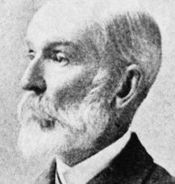George Renny (VC) facts for kids
Quick facts for kids
George Alexander Renny
|
|
|---|---|

Major-General George Renny
|
|
| Born | 12 May 1825 Riga, Russian Empire |
| Died | 5 January 1887 (aged 61) Bath, Somerset |
| Buried |
Locksbrook Cemetery
Bath, England |
| Allegiance | |
| Service/ |
Bengal Army |
| Rank | Major General |
| Unit | Bengal Horse Artillery Royal Artillery |
| Battles/wars | First Anglo-Sikh War Indian Mutiny |
| Awards | Victoria Cross |
Major General George Alexander Renny VC (born May 12, 1825 – died January 5, 1887) was a very brave soldier. He received the Victoria Cross, which is the highest award for courage given to British and Commonwealth soldiers. It's given for incredible bravery when facing an enemy.
Early Life and Army Start
George Renny was born in Riga, a city on the Baltic Sea, where his father was a British merchant. When he was a boy, he moved to Scotland. He went to school at Montrose Academy and then to Addiscombe Military Seminary. This was a special school for training army officers.
In 1844, George joined the Bengal Horse Artillery as a second lieutenant. This was a part of the British army that served in India. He fought in the First Anglo-Sikh War, including a big battle called battle of Sobraon in 1846. A few years later, in 1849, he got married to Flora Hastings MacWhirter. They had six children together.
Amazing Bravery: The Victoria Cross Story
George Renny was 32 years old and a Lieutenant during the Indian Mutiny in 1857. This was a major uprising against British rule in India. His brave act happened on September 16, 1857, during the siege of Delhi.
The British army was trying to take back the city of Delhi from the rebels. On September 16, the soldiers were moving forward steadily. They brought large cannons into the city to break down the walls of an important building called the arsenal. The arsenal was like a huge storage place for weapons.
Inside the arsenal, there were 171 guns and many explosives. The rebels realized they were losing something very important. They launched a strong counter-attack, firing their guns from nearby rooftops. They even set fire to a shed that held explosives!
It was a very dangerous moment. Another officer, Second Lieutenant Edward Thackeray, bravely put out the fire, even with bullets flying around him. At the same time, Lieutenant George Renny showed incredible courage. He climbed onto the arsenal's wall. From there, he threw several shells, which are like small bombs, with their fuses lit, right into the middle of the attacking rebels. The explosions caused by these shells stopped the attack completely. Both Thackeray and Renny received the Victoria Cross for their heroic actions that day.
Queen Victoria herself presented George Renny with his Victoria Cross at Windsor Castle on November 9, 1860.
Later Military Career
After his brave actions during the Indian Mutiny, George Renny continued to serve in the army. He was promoted several times, becoming a captain in 1858 and a major shortly after. He also commanded a group of horse artillery during another military campaign in 1868.
He continued to rise through the ranks, becoming a lieutenant-colonel and then a colonel. When he retired from the army in 1878, he was given the honorary rank of major general.
Major-General Renny passed away in Bath, England, on January 5, 1887, when he was 61 years old. He is buried in Locksbrook Cemetery. In 2007, his grave was cleaned and restored by a modern army unit that continues the legacy of the Bengal Horse Artillery.
Today, you can see George Renny's Victoria Cross on display at the Lord Ashcroft Gallery in the Imperial War Museum in London.

